03:39
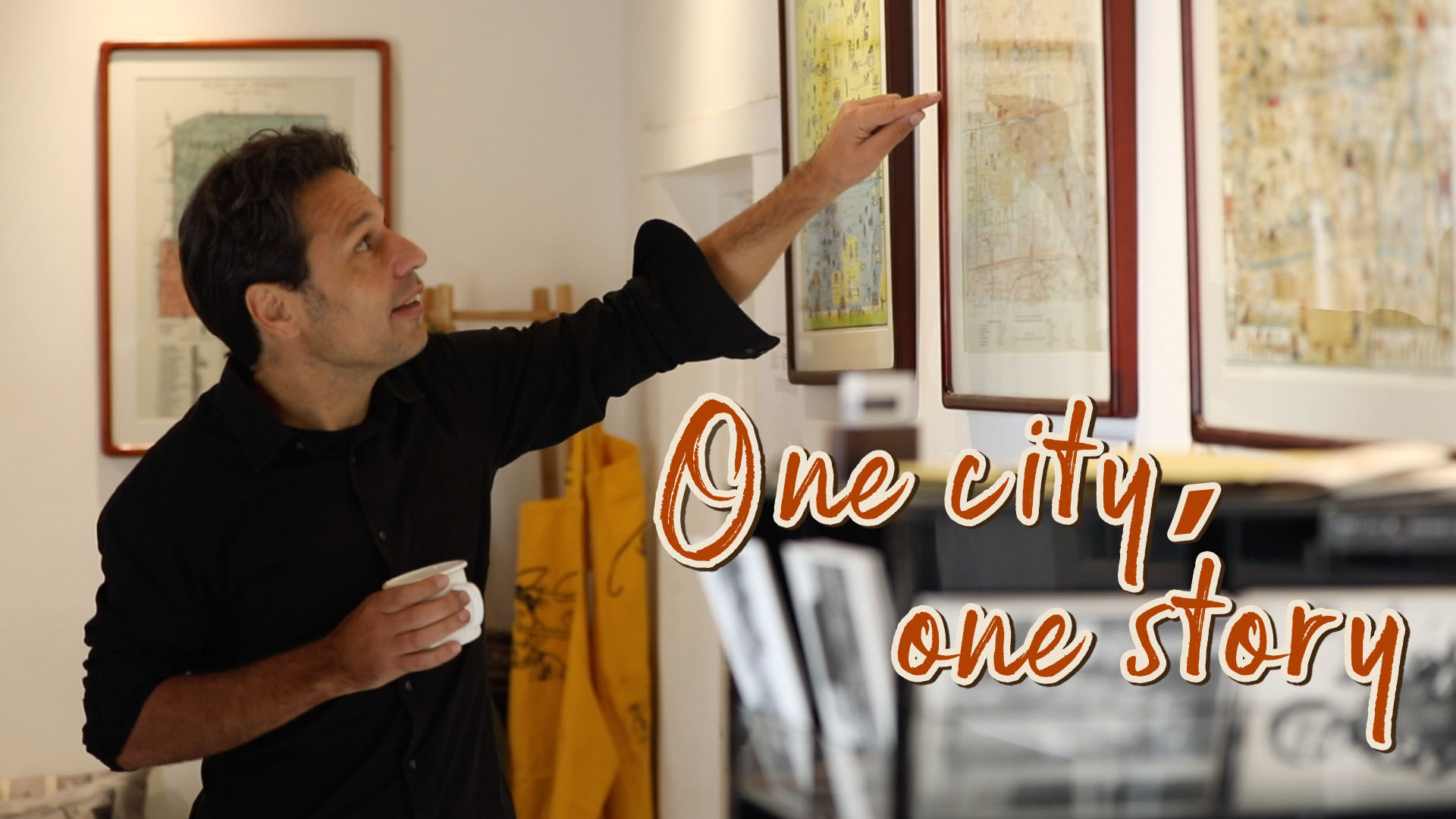
In the Chinese capital of Beijing, one particular alley stands out — not for its bustling coffee houses or cultural shops, but because it is home to a Danish entrepreneur's public history space.
Lars Ulrik Thom has been in Beijing for 16 years and during this time collected a large number of old maps, photos and historically related curios, creating a microcosm of Beijing's history. As the founder of "Beijing Postcards", a company dedicated to documenting Beijing's past, Thom told CGTN that the main goal of his shop is to make people relate to the city they live in.
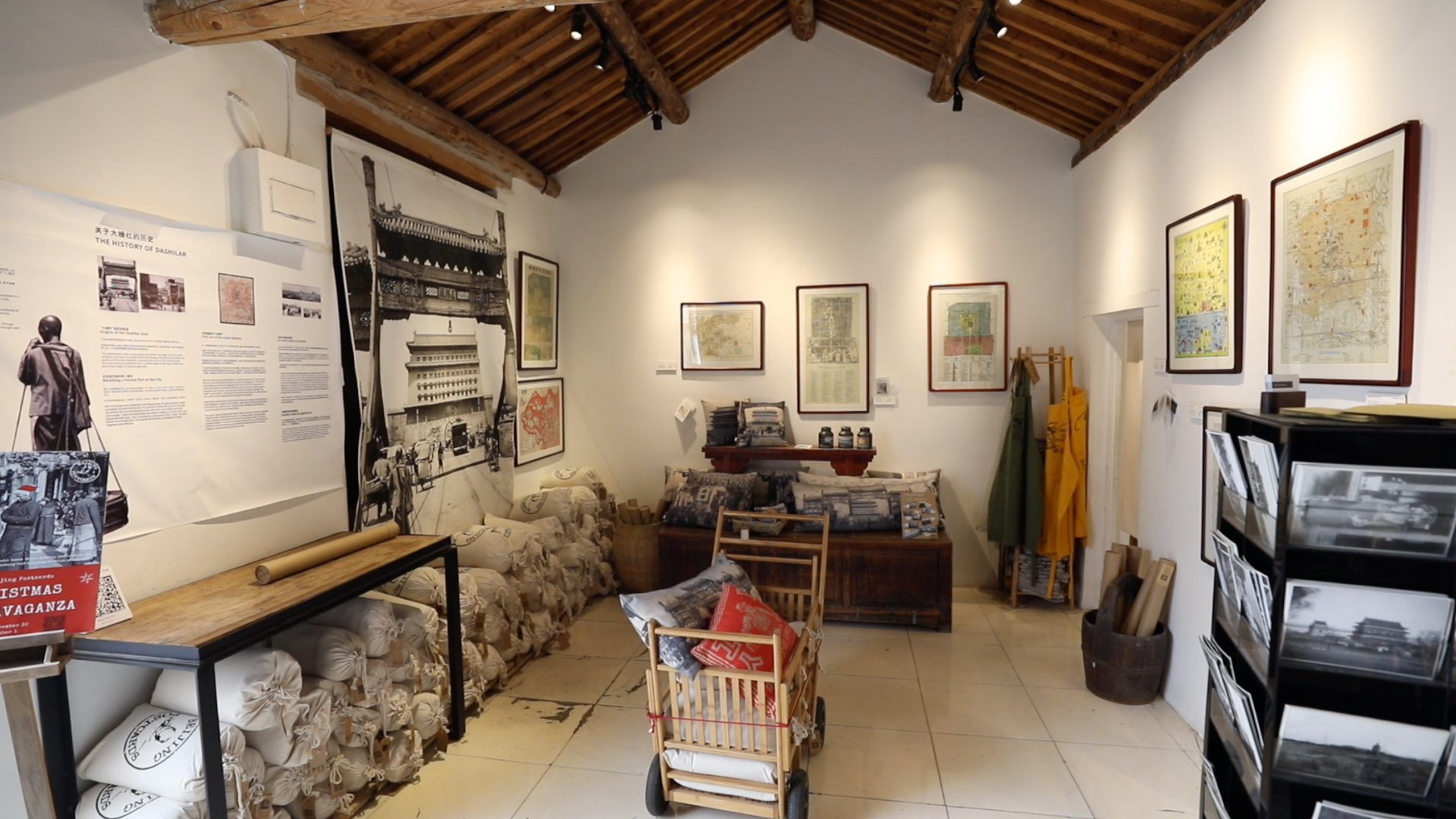
A view of "Beijing Postcards". /CGTN Photo
A view of "Beijing Postcards". /CGTN Photo
A keen interest in Chinese history and a huge collection of old Chinese photographs have turned Thom into a Beijing-focused historian. Through extensive research, Thom realized the ways in which the Beijing of today differed from that of a hundred years before. Subsequently, he and his partner Simon Rom Gjeroe dove in further to the city's history and developed a business around this. "Beijing Postcards" bridges the past to the present and links Chinese history viewed from both domestic and foreign perspectives.
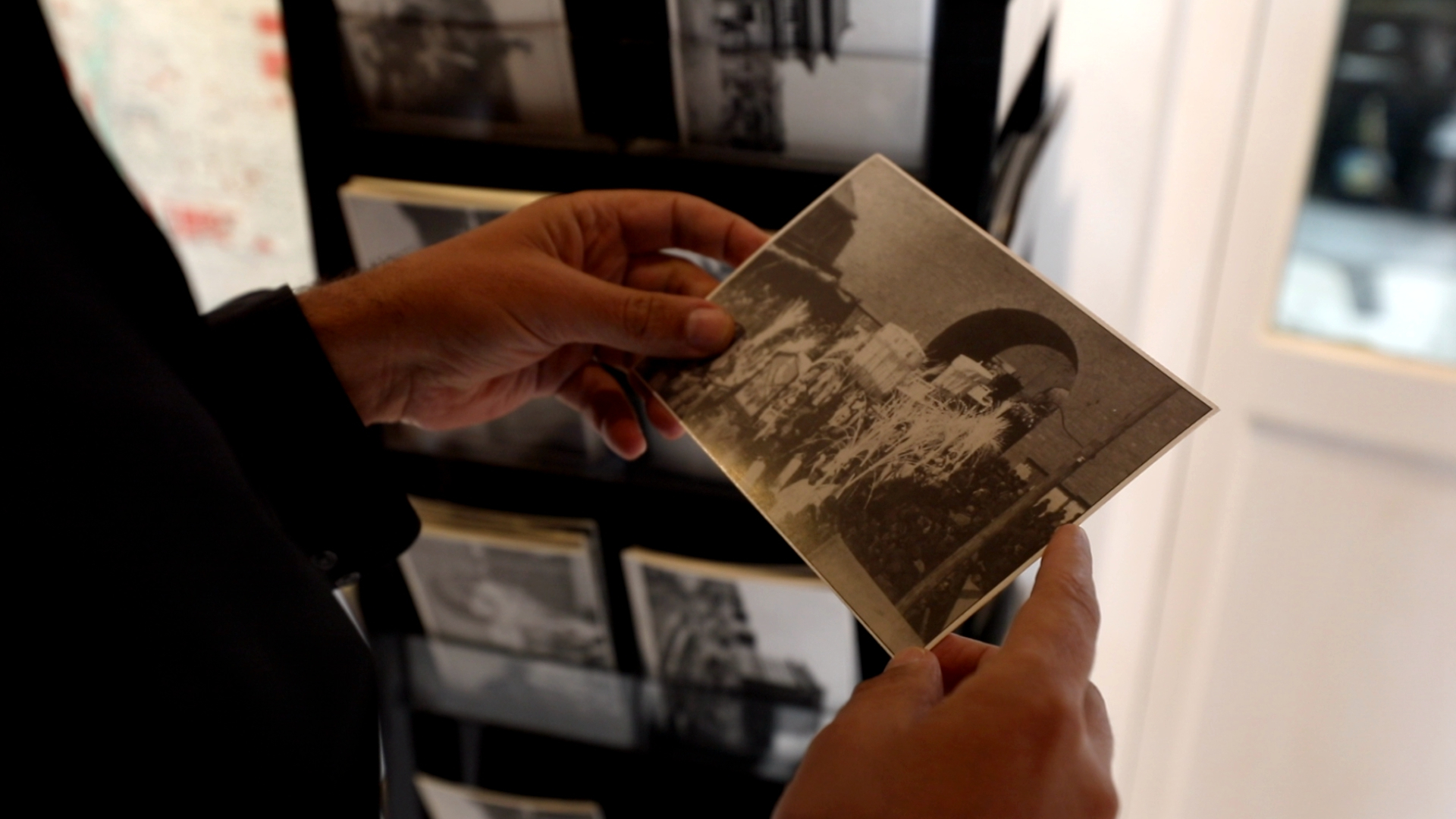
A photo of old Beijing. /CGTN Photo
A photo of old Beijing. /CGTN Photo
Thom says most photos were taken between the 1920s and 1940s by foreigners, diplomats and missionaries in the country at the time. Every photo is a snapshot of an era; through photos and maps, people can understand the evolution of modern Beijing and see how the city has developed over the last hundred years from different angles.
Thom hopes that visitors will use "Beijing Postcards" as a "platform to gain a simple and general understanding" of the city's development.
One old photo, one old story and one old memory
While indulging in his passion for Chinese history, Thom discovered that there were lot of stories that people had not been told. Many of these came from artefacts that were discovered outside of China because they were originally taken, drawn or published by foreigners.
One German map is among Thom's favorite pieces. A closer look at the map reveals that there are lots of settlements lying outside Qianmen's city gate. But, most official maps of Beijing from 100 or 200 years ago do not depict such settlements.
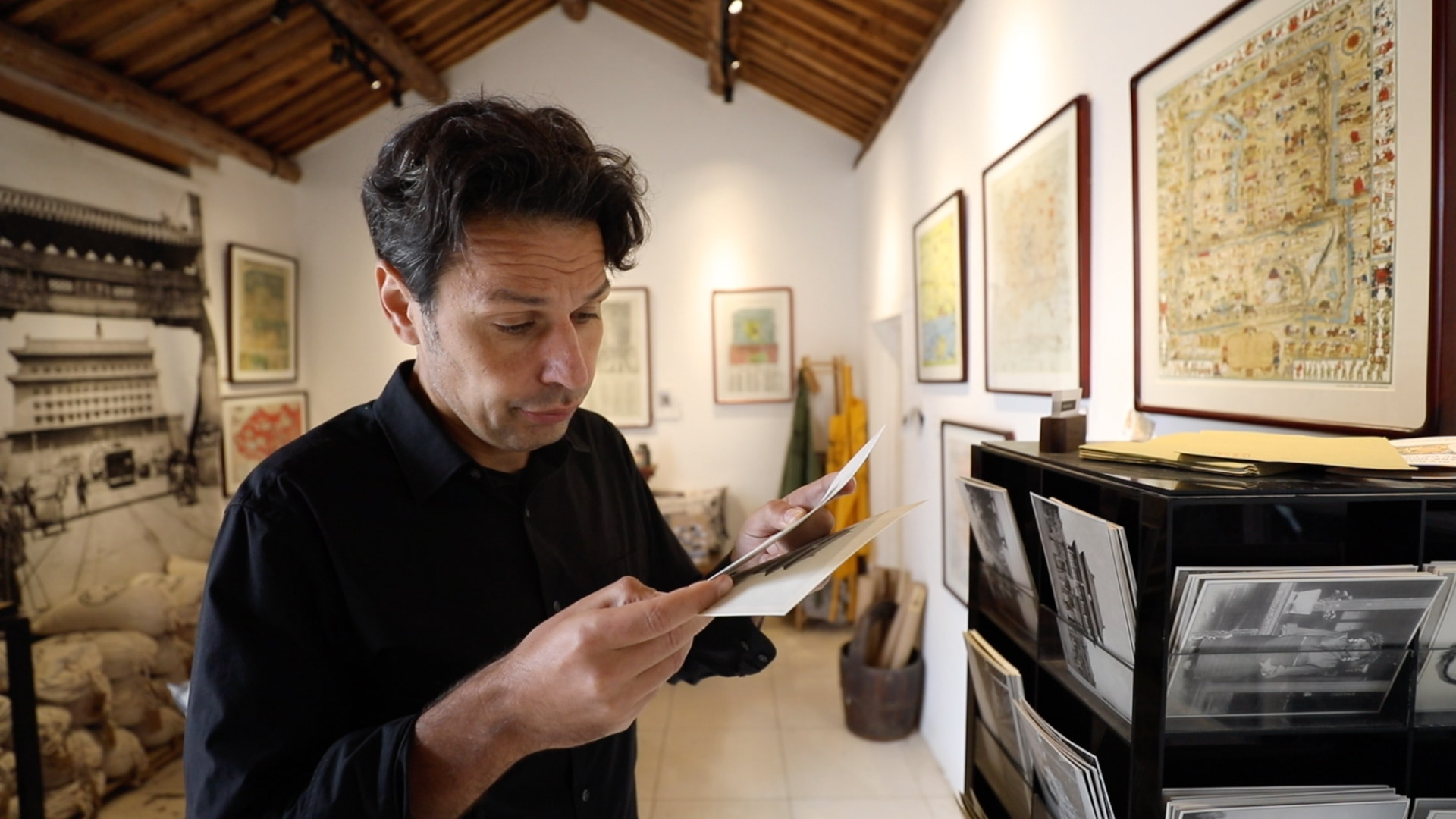
Lars Ulrik Thom gazes at old photos in "Beijing Postcards". /CGTN Photo
Lars Ulrik Thom gazes at old photos in "Beijing Postcards". /CGTN Photo
Why is this? In fact, the German map depicts a "floating population" outside the city gate: people who did not have a license to live within, but offered trades that were actually part of life within the city. The German map shows viewers what exactly existed in Beijing at the time. "It's very honest, a portrait of Beijing 120 years ago," Thom said. The contrast emphasizes that some ways of depicting history are not totally accurate.
Preserving the 'soul of the city'
Every city has its own history and vibe. Beijing, while full of ancient memories, has also rapidly developed; at the risk of destroying the city's history particularly if many things are destroyed or rebuilt. "If you tear too much down in an inconsiderate way, then you maybe lose that soul of the city," Thom said.
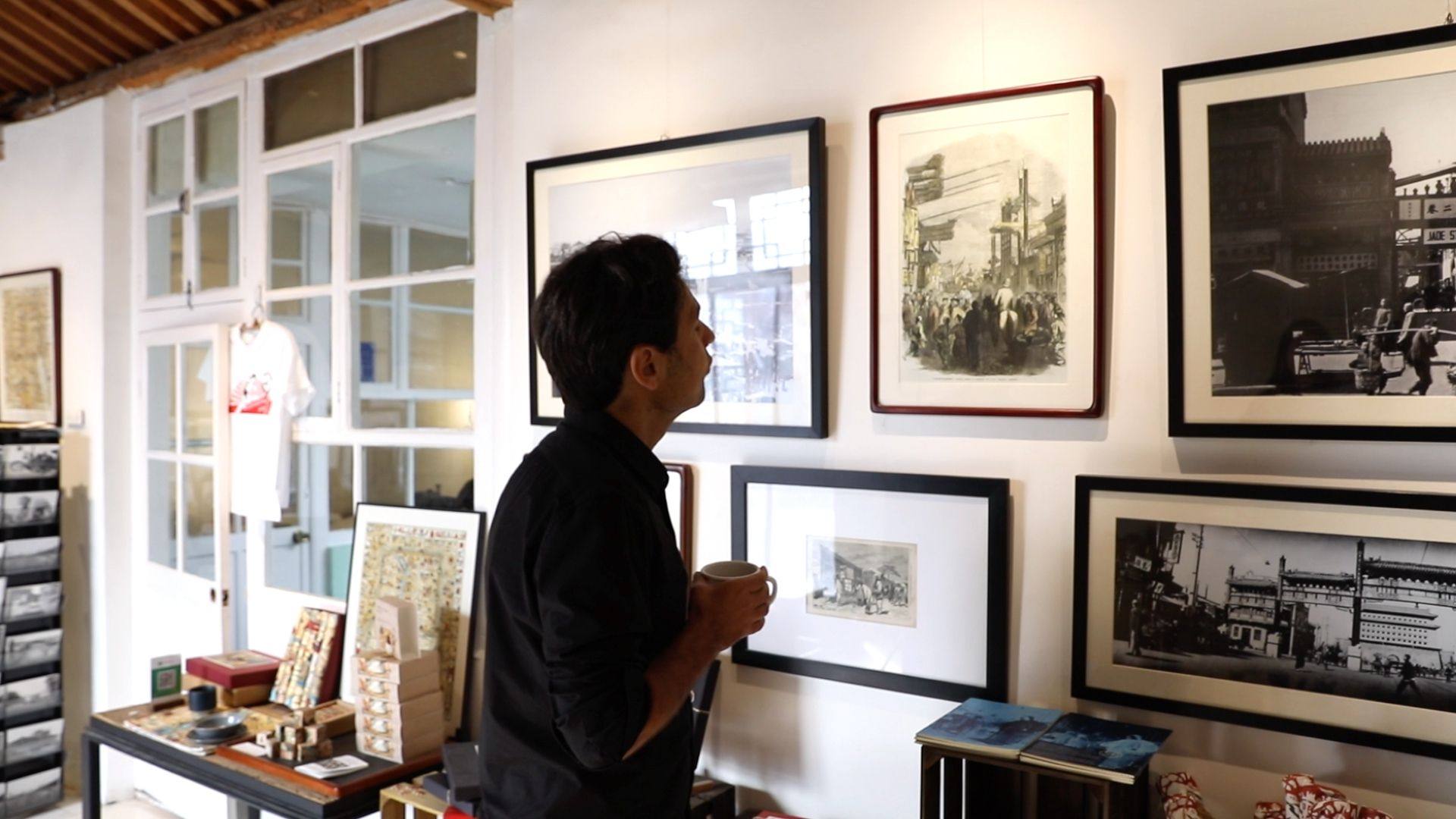
Lars Ulrik Thom studies old photos in the "Beijing Postcards". /CGTN Photo
Lars Ulrik Thom studies old photos in the "Beijing Postcards". /CGTN Photo
Losing our relationship with the past risks losing who we are. Thom believes that ordinary people, such as Beijing residents, have interesting and important stories to share about life in the city and these need to be preserved.
Today, apart from selling products related to Beijing's history, "Beijing Postcards" regularly organizes lectures, exhibitions or other cultural events for visitors who are interested in the history of the city.

Lars Ulrik Thom works at "Beijing Postcards". /CGTN Photo
Lars Ulrik Thom works at "Beijing Postcards". /CGTN Photo
After studying and working as a tour guide, Thom now leads a group in a visit to the Forbidden City every Wednesday. What attracts Thom to working as a tour guide is the potential to meet interesting people who ask equally interesting questions, to which he might not know the answer. If this happens, it reminds him that "sometimes you think you know everything, but that's often the biggest mistake you can ever make. You actually have a lot of blind spots and it's like a treasure, it's like so much to learn about."
Thom says that he intends to go to Beijing's National Library, talk to a lot of people in the Dashilar area and do more research to keep learning.
It can take a long time to gain a comprehensive understanding of a city, but Thom is always on his way.
Address of "Beijing Postcards": No.97 Yangmeizhu Byway, near Tiananmen Square
Transportation: Visitors can take subway line 2 and get off at Qianmen Station, head out from Exit C, and then walk about 15 minutes to the destination.
Opening hours: 11:00 a.m. - 20:00 p.m. every day
Videographer: Zhu Shuying
Video editor: Wang Xiaoxiao
Video cover designed by Fan Chenxiao